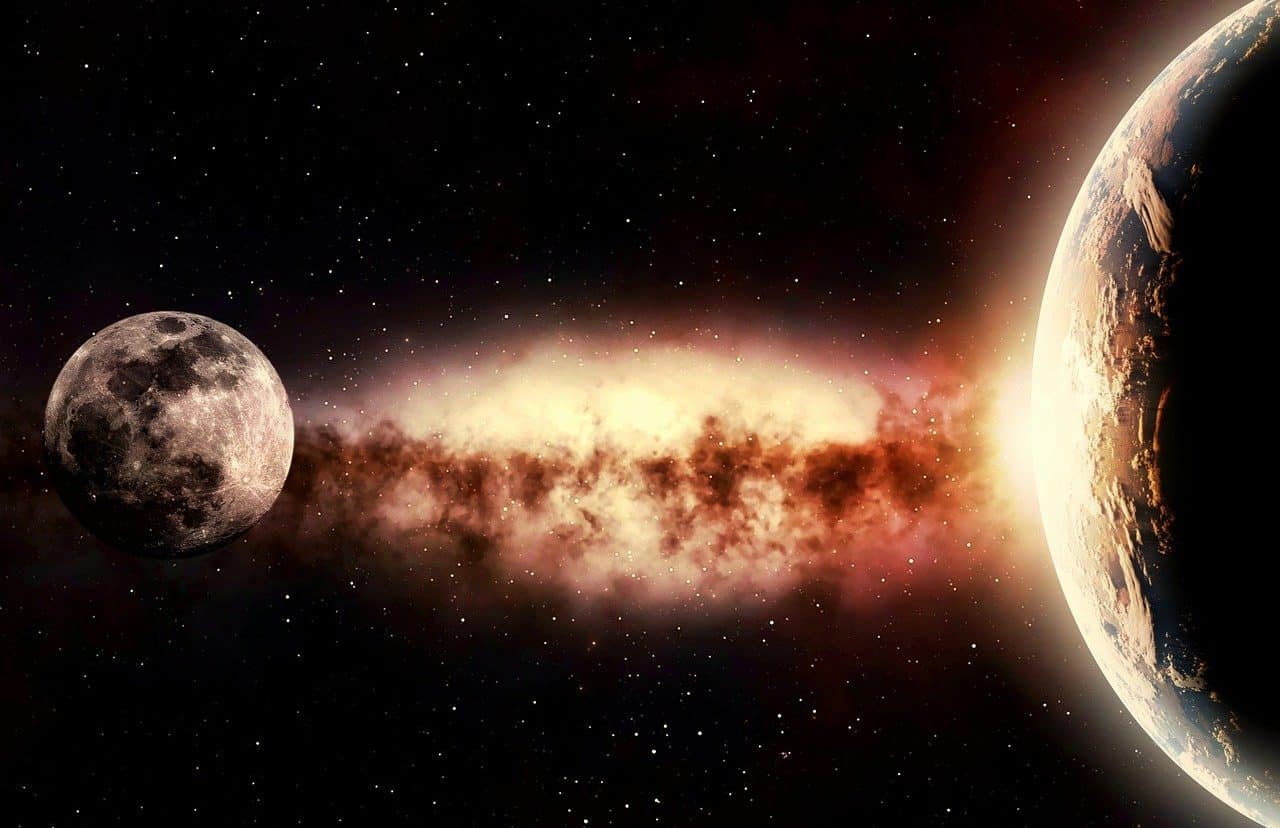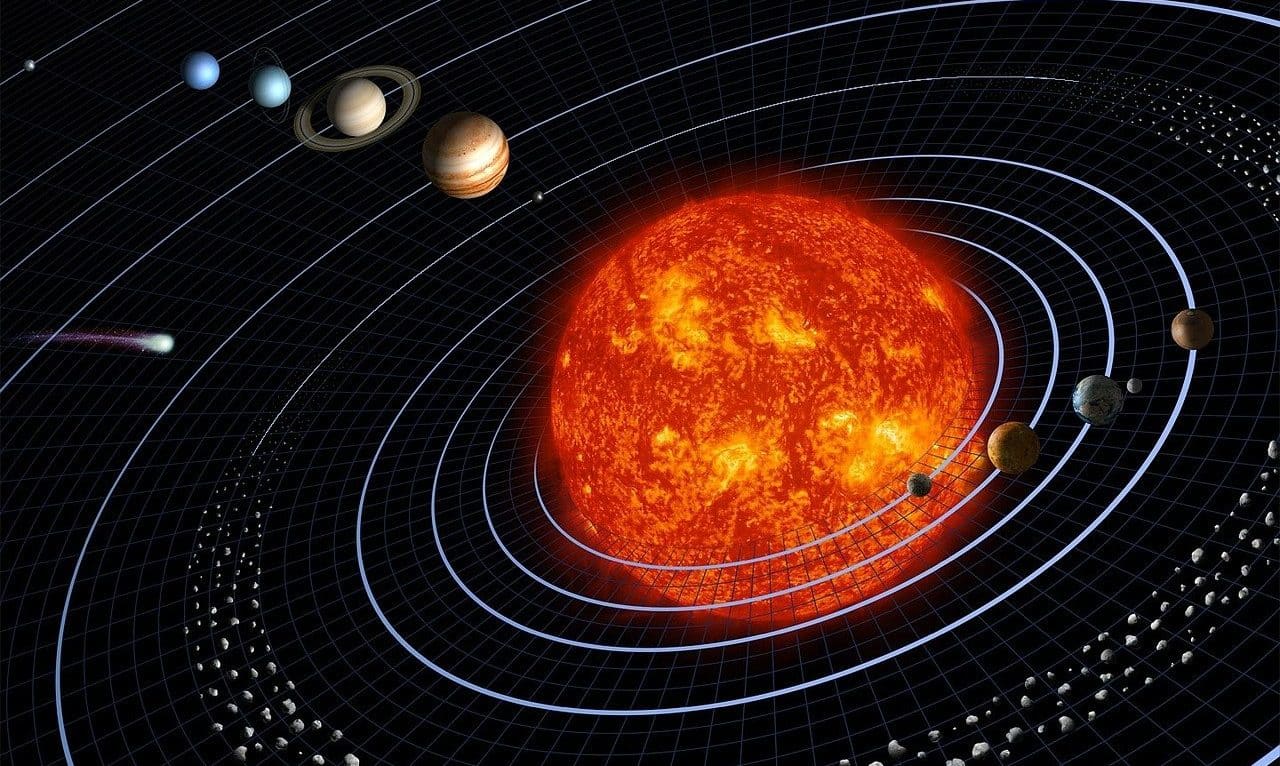
According to cosmic inflation, the expansion of the universe occurred rapidly after the Big Bang.
Cosmic inflation is a hypothesis in cosmology that postulates that the universe experienced accelerated expansion during the first moments of its existence, in a fraction of a second after the Big Bang, when the universe was still extremely dense and hot.
During this brief period of inflation , the universe would have undergone exponential expansion, increasing its size by an extraordinary factor. Cosmic inflation is proposed as an explanation for several observed aspects of the universe, such as the uniformity of the cosmic microwave background radiation , the lack of observable curvature in the large-scale universe, and the uniform distribution of matter in the cosmos .
Alan Guth
Alan Guth is an American theoretical physicist known for his significant contributions to cosmology, particularly the cosmic inflation hypothesis . His research revolutionized our understanding of the early universe and provided a convincing explanation for certain phenomena observed in the cosmos.
Guth developed the theory of cosmic inflation in the early 1980s while a professor at the Massachusetts Institute of Technology (MIT) . According to him, the expansion of the universe would have been driven by a scalar field, which is a form of energy with special properties.
His theory solved several important problems with the standard cosmological model. For example, it explained the observed isotropy and homogeneity of the large-scale universe, as well as the problem of the flatness of the universe (its almost flat geometry) and the horizon problem (the apparent uniformity of the cosmic microwave background radiation observed throughout directions of heaven). It also provided an explanation for the formation of large-scale structures in the universe, such as galaxies and galaxy clusters .
Additionally, Guth developed quantum inflationary field theory to explain the mechanisms behind cosmic inflation, according to which for a brief period after the Big Bang the universe was dominated by a scalar field that caused exponential expansion. This field would have undergone a phase transition, similar to that which occurs in particle physics, thus triggering inflation.
The works of Alan Guth were instrumental in establishing cosmic inflation as a viable and compelling theory in cosmology . Their ideas have been supported by a number of astronomical observations, such as anisotropies in the cosmic microwave background radiation and the distribution of galaxies in the universe. Although this theory continues to be the subject of research and debate, it has been fundamental to our current understanding of the early moments of the universe .
Related models
The following models represent different approaches and explanations within the framework of cosmology and cosmic inflation theory, each with their own implications and areas of research.
ΛCDM model
It is the standard model of cosmology, combining cosmic inflation with cold dark matter (CDM) and dark energy (Λ, the Greek letter Lambda ). It predicts a flat universe with accelerated expansion , consistent with observations such as cosmic microwave background radiation and the distribution of galaxies.
Brans-Dicke model
Proposed by Carl H. Brans and Robert H. Dicke , this model is a modification of general relativity that includes an additional scalar field. It has been considered in relation to cosmic inflation and other alternative cosmological theories.
Open, closed and flat universe model
It describes a possible geometry of the universe based on the density of matter and energy in the cosmos. Cosmic inflation favors a flat universe, where the total geometry of space is Euclidean.
Pre-Big Bang model
Proposed as an alternative to the standard Big Bang theory, this model suggests that the universe underwent a series of cycles of expansion and contraction infinite in time. Cosmic inflation could be part of this cyclical situation.
Hartle-Hawking model
It combines quantum mechanics and general relativity to describe the origin of the universe as a series of quantum fluctuations. It proposes that the universe does not have a defined beginning, but rather arises from a quantum superposition of possible geometries.
Stationary universe model
An alternative to the Big Bang according to which the universe has no defined beginning and remains constant in density and appearance over time.
ekpyrotic model
It proposes that the Big Bang was the result of a collision between membranes (branes) in a space of extra dimensions, giving rise to an expanding universe. It has been linked to cosmic inflation in some contexts of string and brane theory.

Alan Guth's contributions were especially relevant to the cosmic inflation hypothesis.
Beginning
Anthropic principle
It suggests that the physical laws and constants of the universe are finely tuned to allow the existence of intelligent life. This implies that if these constants were slightly different, the universe would not be conducive to life as we know it.
Some proponents of the anthropic principle argue that cosmic inflation is necessary to explain why the universe is so uniform and flat , allowing the formation of structures such as galaxies and stars, which in turn enable the existence of life.
Copernicus principle
It refers to the idea that Earth's position in the universe is neither special nor privileged . This challenges geocentrism and suggests that the Earth orbits the Sun, like other planets, without occupying a central position in the cosmos.
The Copernicus principle relates to the understanding that the universe does not need to be designed specifically to accommodate life on Earth, but rather that our observations and experiences must be understood within the context of the general laws of the universe.
Constants
Fine structure constant
A fundamental parameter in physics that describes the strength of the electromagnetic interaction between charged particles, such as electrons and protons. It is denoted by the symbol α (alpha) and is approximately equal to 1/137.
This constant is crucial in the description of phenomena such as light scattering, the ionization of atoms and the formation of chemical bonds. In relation to cosmic inflation, the fine structure constant is relevant because of its importance in particle physics and its role in the formation of the first structures in the universe .
Cosmological constant
Represented by the Greek letter Λ (lambda), it is an additional term in the Einstein field equations of general relativity. Originally introduced by the renowned scientist to obtain a static solution to the problem of gravity, it was later rediscovered by other researchers and related to dark energy in the context of modern cosmology.
In relation to cosmic inflation, the cosmological constant is relevant because it can influence the expansion of the universe and the large-scale dynamics of the cosmos, especially during periods of cosmic inflation and acceleration .

The Copernicus principle is opposed to geocentrism.
Types of inflation
Chaotic inflation
It proposes that inflation is driven by the inflaton scalar field that is in a chaotic state. The potential energy of the inflaton slowly decreases as the universe expands, thus generating inflation.
Hybrid inflation
This model combines features of chaotic inflation with phase transitions in an auxiliary field, which can lead to different stages of inflation and the production of matter in the universe.
Stochastic inflation
It suggests that inflation can occur in different regions of the universe randomly due to quantum fluctuations. This leads to the formation of cosmic bubbles within a larger multiverse.
Curvature inflation
It focuses on the quantization of space-time during inflation. He proposes that inflation can occur even in initially curved universes, leading to a flatter geometry.
Inflation again
It suggests that inflation is caused by a new scalar field that interacts with matter through a new force in addition to gravity.
Chirality inflation
Based on grand unification theories, this model proposes that inflation is driven by the interaction between gravity and the chirality of elementary particles, leading to a rapid and accelerated expansion of the universe.
